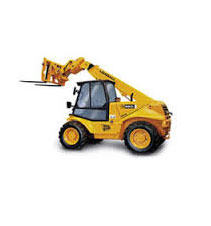
Duration – 5 days
Course Content
- It is envisaged that by the end of this course of training the learner will be able to answer questions on and perform the following:
- Have a basic understanding of the industry, the dangers of working in the industry and their responsibilities as an operator.
- Be able to conform to manufacturer’s requirements as per technical data, conform to relevant regulations and legislation.
- Be able to locate and identify the major components of the machine and explain their functions.
- Be able to locate and identify steering, driving and braking controls and explain their functions.
- Conduct all pre-operational checks in accordance with the manufacturers and legislative requirements.
- Safely mount and dismount the machine.
- Start and stop the engine and safely move the machine off and stop it safely.
- Configure the machine for travel and manoeuvre it safely across varying terrain in open and confined areas.
- Conduct all necessary safety checks at the work area.
- Manoeuvre the machine to the work area and correctly configure in readiness to carry out lifting and load handling tasks.
- Be able to locate, identify and explain safe working loads, lifting capacity chart and explain how the manufacturer may reduce the lifting capacity when moving a suspended load, different lifting configurations and working ranges.
- Identify and explain different lifting procedures, explain what task could fall into each category.
- Identify and explain centres of gravity, calculate estimated weights and loads.
- Identify any overhead/proximity hazards.
- Be able to agree the signal codes/hand signals, direction of movement, safe working and safe landing, placement zone with the slinger/signaller.
- Ensure telescopic handler is in a safe condition and attachments fitted correctly.
- Check load integrity and security by carrying out trial lift.
- Be able to lift and move a load to a designated position in a safe and controlled manner ensuring minimum uncontrolled movement.
- Environmental considerations.
- Carry out all out of service and securing procedures.
Course ratios:
Novice – 3 delegates, 1 machine, 5 days
– 2 delegates, 1 machine, 4 days
– 1 delegate, 1 machine, 3 days
Refresher – 3 delegates, 1 machine, 1 day
Experienced worker tests (no training) – 6 delegates, 1 machine, 1 day
Bolt on – to existing Telescopic Handler Card
Novice – 4 delegates, 1 machine, 2 days
– 2 delegates, 1 machine, 1 day
Refresher – 4 delegates, 1 machine, 1 day
Experienced worker tests (no training) – 6 delegates, 1 machine, 1 day
Course Aims
The NPORS N138 course aims to provide the candidate with a thorough practical and theory training in operating a Telescopic
Handler Suspended Loads in order to to enable the candidate to pass the NPORS Theory and Practical Tests.
Course Requirement
All visitors must report to reception on arrival and follow site safety rules at all times.
There are no catering facilities on site, so delegates need to provide their own lunch. There are tea and coffee facilities available.
Candidates must bring and wear their PPE on site for plant testing.
They must also bring signature and photographic identification as required for all testing.
Examination Board
Established in 1992, the National Plant Operators Registration Scheme is now one of the UK’s leading Accreditation and Registration Bodies, working across the Construction, Industrial, Utilities, Warehousing and Distribution, Agricultural, Ports and Marine sectors.
NPORS offers flexibility, whilst maintaining standards, both nationally and internationally by working with industry and Accredited Training Providers
Assessment
To achieve the NPORS Operators Card candidates must pass both the NPORS Theory and Practical Test.
Refresher / Re-qualification Information
Once you have achieved your NPORS Operator Card it lasts for 3 years.
